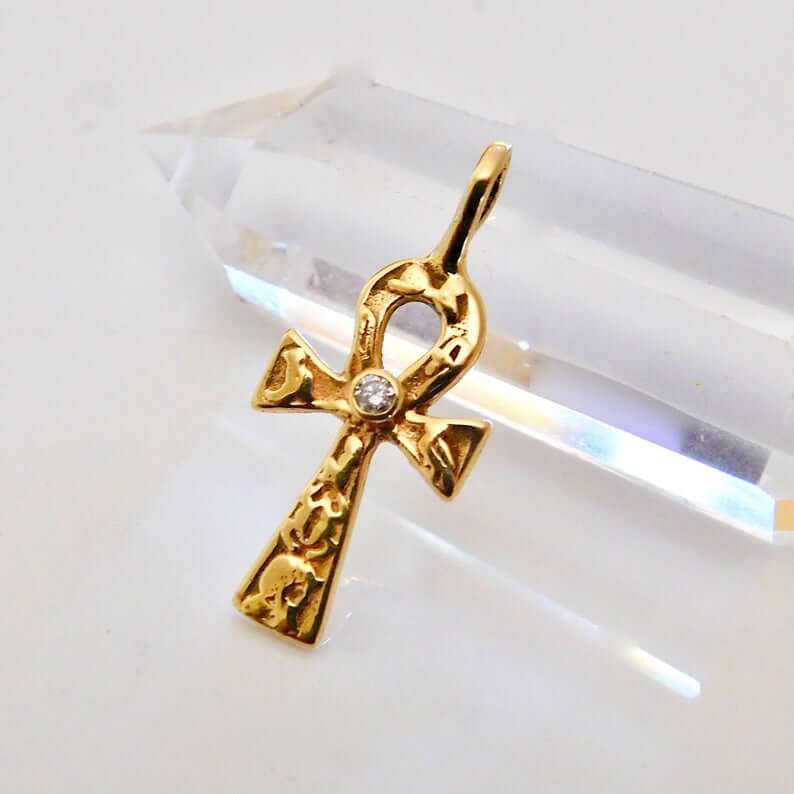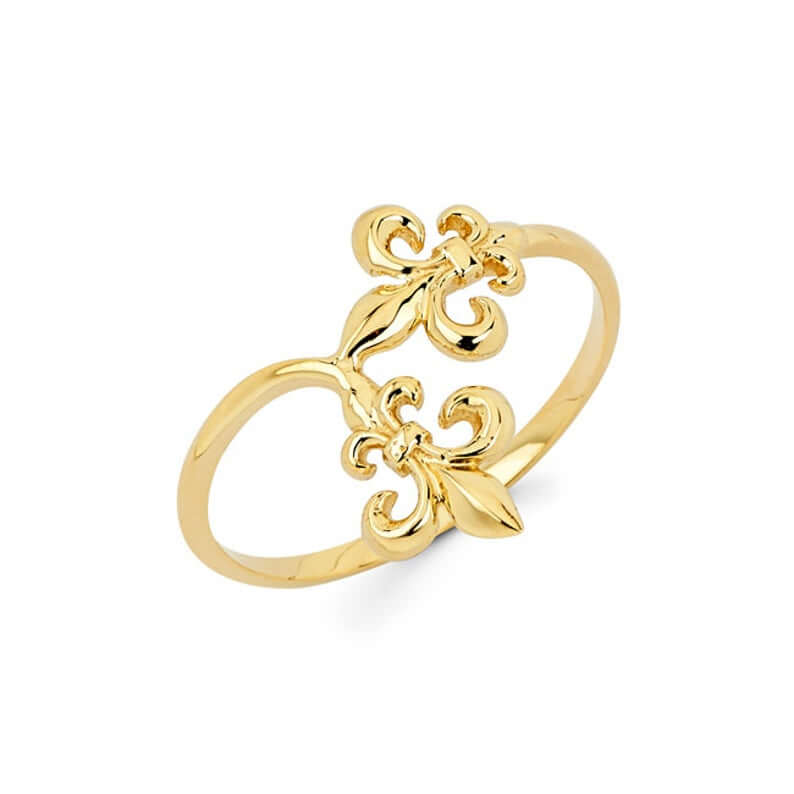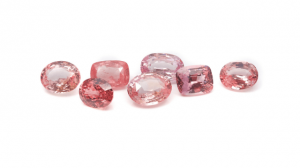As Wedding Know How editors, we write about things that we love and we think you'll like too. We have affiliate partnerships and sponsorship and may generate some revenue from these at no cost to you.
When buying a piece of jewelry, we usually focus on its design and how it would complement our style. We rarely look beyond that. However, jewelry has been around for millennia, worn by our ancestors for various reasons including protection, good fortune and health.
Over time, every culture has an association with specific jewelry symbols, developing their own values and ideas around them.
In this article, we’ll explore different symbolisms of jewelry and the role it has played in various cultures around the world. The next time you go shopping for jewelry, you’ll have a better idea and understanding of the kind of piece you’re looking for.
The Roles of Jewelry Across Various Cultures
The history of jewelry is rich and long, going back many thousands of years. With time, different cultures adopted different roles and purposes for their jewelry, with some of the remaining relevant to this day. Here are some of the most common roles jewelry has played in different cultures worldwide:
Status Symbol
Throughout history (and even today), jewelry has been seen as a status symbol of the person wearing it. Our ancestors’ common practice was to determine a person’s wealth according to the value and the amount of jewelry they wore.
Currency
As the main trading tool, jewelry has been widely used as currency in many different cultures. Even today, it’s used as a currency in some cultures, depending on how valuable the pieces are.
Security
If jewelry is made of valuable items, it can provide financial security and is considered an investment for the owner. Materials such as gold, platinum and diamonds have always represented this value.
Religion
Many pieces of jewelry represent a specific position within a religion or serve to commemorate various religious events, such as a baptism, for example. Some of the most widespread religious jewelry symbols are the Christian cross or the Star of David.
Self-Expression
Besides tattoos, the majority of people use jewelry largely as a form of self-expression and a fashion statement.
Relationship
Promise, engagement and wedding rings are the most common types of jewelry to mark a person’s relationship status worldwide. These rings symbolize the love and commitment of a couple wearing them, but they’re also a signal to others that you’re in a relationship.
Protection
Since ancient times, people believed that wearing different amulets and talismans would bring them good fortune and protect them from harm. This type of jewelry is still quite popular in various cultures across the world.
Traditional Egyptian Jewelry Symbols
Jewelry played an important part in ancient Egypt, where both men and women of all classes adorned themselves with it. It was a custom to decorate statues of their kings and gods with jewels, as well as their deceased. Some of the most notable Egyptian jewelry symbols include:
Ankh

Solid gold Ankh cross pendant by Temple Jewels Ibiza. See it here.
Also known as the Breath of Life, the Ankh is an ancient Egyptian symbol, representing eternal life. Many Egyptian deities, especially the goddess Isis, were often depicted holding this symbol to represent life after death.
Today, the Ankh has a wider symbolic interpretation and is said to represent longevity, immortality and the universe.
The Wedjat Eye

Solid gold Eye of Horus ring by Temple Jewels Ibiza. See it here.
Also known as the Eye of Horus, the Wedjat Eye is another famous Egyptian symbol, most commonly associated with the god Horus as well as his nurse, Wadjet. It symbolizes good health, protection, and royal power.
In modern jewelry, the Wedjat Eye is usually combined with other Egyptian symbols, like the scarab or Ankh. The pupil of the eye is often replaced with a colored gem or a crystal bead and the symbol can be found in many different types of jewelry.
Traditional Middle Eastern Jewelry Symbols
Modern-day jewelry is mostly inspired by the prevalent religious symbols of the Middle East, including Hebrew symbols as well as the symbols of the Islamic faith.
Hamsa Hand

Sterling silver Hamsa hand earrings by Sarison Gifts. See them here.
One of the most popular Middle-Eastern symbols in modern jewelry is certainly the Hamsa, also known as the Hamesh Hand, representing the hand of God. In Judaism, the Hamsa symbolizes the Hand of Miriam, Moses, and Aaron’s sister. In the Islamic religion, it represents the Hand of Fatima, daughter of Prophet Mohammed daughter.
The Hamsa is seen as a protective symbol throughout cultures and religions across the world, bringing luck, happiness, health, and good fortune to those who wear it.
Shema Israel

Shema Israel diamond pendant by Estee Brook. Check price here.
This is the most important Hebrew declaration of faith and the oldest prayer of Judaism. Decoratively, it is an important motif in Jewish faith and is often worn as jewelry, most commonly as a necklace pendant.
Traditional Hindu Jewelry Symbols
Wearing jewelry is an important part of Indian culture since it carries specific spiritual and ethnic meanings while symbolizing protection and blessings from the divine. Here are some of the most well-known Hindu symbols found in jewelry:
Lotus Flower

Lotus flower earrings by Lenti Jewelry. See them here.
In Hinduism, the lotus flower is considered a powerful symbol of purity, wisdom and beauty. It’s also an important concept of Buddhism, most commonly associated with enlightenment.
In jewelry today, differently colored lotus flowers symbolize different ideas. For example, a white lotus flower represents nature, red represents love and passion and blue signifies spirituality. The flower is often depicted as an open lotus flower.
Om

Sterling silver Ohm pendant by Sale Zone 4 You. See it here.
In Buddhist and Hindu religions, Om is considered the primordial sound of the universe and is one of the most important symbols. In Hinduism, specifically, the three syllables of Om represent the three Hindu deities, Brahma, Vishnu and Shiva, as well as the heavens, the earth and the underworld. In modern times, Om is a contemporary symbol, often found in jewelry, art and tattoos.
Ganesh

Sterling silver Ganesh ring by Jewelry Talisman. See it here.
Ganesh is a Hindu god of wisdom and efficiency, considered to be a remover of obstacles. He’s often depicted as having a big belly, four arms, and a head of an elephant.
Ganesh’s elephant head is the most common symbol found in modern jewelry, representing knowledge, wisdom and generosity.
Traditional Chinese Jewelry Symbols
The history of Chinese jewelry is especially interesting. They made their jewelry from pieces of silk cords, various precious metals, gold coins and jade. Their jewelry is more than just simple ornaments, but is often worn as amulets for good luck. Here are some of the most popular Chinese jewelry and symbols:
Yin-Yang

Yellow gold Yin Yang pendant by The Diamond Deal. See it here.
While used widely throughout Western cultures, Yin-Yang is essentially a Chinese symbol, representing duality. The Yin and the Yang are symbolizing two opposite ideas and the concept of merging the two opposites together, completing each other and forming a whole.
In jewelry, yin-yang is a well-loved symbol, with black and white as its most typical colors. This symbol is also found in the colors red and blue, representing fire and water. In any case, the concept is always the same, regardless of the color.
Jade

Jade earrings by Sada Jewels. See them here.
Jade is the most traditional part of Chinese jewelry, considered to be the most valuable gemstone. Chinese call it the Stone of Heaven and believe that it possesses magical properties and the power to protect the wearer from illness, bad luck, and evil spirits.
As the perfect combination of durability and beauty, jade is considered the ultimate representation of the yin-yang concept found in nature. Even today, it’s customary in China to gift a small jade bangle to newborn babies to protect them by warding off harm and bad luck.
Traditional Celtic Jewelry Symbols
Celts are known for their intricate symbols, which serve as an inspiration for modern jewelry designers. Their symbols, which are rooted in spirituality and religion, play an important role in their day-to-day life. The following are some of the most famous Celtic jewelry symbols:
Trinity Knot

Celtic trinity knot earrings by Celtic Treasures. See them here.
Also known as the Triquetra, the Trinity Knot predates the Christian symbol of the Holy Trinity. In Celtic culture, the number three was exceptionally significant, representing the body, mind, and spirit, as well as the sky, sea, and Earth.
It’s believed that the Triquetra symbol also signifies the three stages in life – the beginning, middle and the end. The continuous line of the symbols represents the concept that all things in life are interconnected. Today, the Triquetra is a token of honor, love, and protection.
Claddagh

Silver Claddagh ring by Claddagh Ring Com. See it here.
Featuring two hands holding a crowned heart, the Claddagh has a widely recognized design with a unique, symbolic meaning: the hands represent friendship, the heart stands for love and the crown signifies loyalty.
Today, this symbol is often found in rings, shared between friends as a token of their fellowship, or between lovers as the promise of eternal love and commitment;
Tree of Life

Silver and diamond tree of life pendant by Solvar. See it here.
In Celtic culture, life and religion, trees played an extremely important role. They were an essential source of shelter, food, and medicine for the Celts who later developed the Tree of Life symbol to honor them. For them, it represented the source of life itself, as well as the combining forces of nature that create harmony and balance.
Today, the symbol inspires contemporary jewelry designs and is often combined with other natural objects and shapes, such as leaves, birds and butterflies. It’s also decorated with various types of gemstones and crystals.
Popular Native American Jewelry Symbols
Native American jewelry is full of colors, craftsmanship and symbolism. Check out these popular symbols found in modern jewelry:
Dream Catcher

Dream catcher gemstone earrings by Dark Edge Jewelry. Check price here.
Native Americans believed that placing a dream catcher above a sleeping person would trap a nightmare and allow for the pleasant dreams to slide down the feathers and into the sleeper’s head.
Today, this intricate and beautiful symbol is often found in boho-style jewelry such as earrings and necklaces. They can be made of authentic natural materials or wire and cord. It’s thought that dream catchers have the ability to prevent negativity from entering our thoughts and help us keep a positive and joyful spirit.
Naja

Sterling silver naja necklace by Santa Fe Trading Co. See it here.
The Naja is a popular symbol of the crescent moon, turned upside-down. Naja is the Navajo word for crescent and this symbol is often found as a centerpiece in Native American-inspired necklaces.
According to Native American beliefs, the crescent moon is the ultimate symbol of protection as well as serenity.
Popular Religious Jewelry Symbols
Wearing jewelry with religious symbols is a wonderful way of expressing your beliefs and values. Here are some of the most loved symbols of faith across different cultures:
Cross

Yellow gold diamond cut cross pendant by Giannio Deloro. See it here.
The Cross is one of the most recognized religious symbols, central to Christianity. Across Western culture, the cross may have various symbolic meanings. Some believe that it offers protection from the evil spirits. However, others see it as a representation of the four elements: water, wind, fire and earth, or the four directions, north, south, west and east.
All in all, there are many different varieties of the cross symbol found in jewelry, as well as tattoos. The symbol can be simplistic or more stylized, and people wear it to show their commitment to their Christian faith.
Star of David

Star of David silver bracelet by Chenwinkler Jewelry. See it here.
Also known as the Shield of David and the Seal of Solomon, the Star of David symbol is most commonly associated with Judaism. It’s one of the most powerful symbols found in modern jewelry, representing divine protection, good luck and solidarity.
Fleur-de-Lis (Flower of the Lily)

Fleur-de-lis ring by Gianni Deloro. See it here.
The Flower of the Lily is a stylized flower symbol, featuring three petals merged at the base. Throughout history, this symbol was used by many cultures and religions. It has diverse meanings and interpretations and in Christianity, it’s been equated with the Holy Trinity symbol. In the past, the Fleur-de-lis also represented royalty in many European countries (especially France), decorating their flags and coat of arms.
Depicting a graceful lily flower, the Fleur-de-Lis symbol is particularly interesting to female audiences and is often used in women’s jewelry designs.
General Jewelry Symbols
There are numerous other symbols frequently used in jewelry around the world with unique and universal meanings across different cultures. Let’s take a quick look at some commonly known general symbols used in jewelry:
- Heart: Throughout history, the heart has been a universal symbol of passion, love and affection.
- Anchor: Holding a ship in place, anchors are seen as symbols of security, strength and safety. In the Christian faith, the anchor symbol represents hope.
- Key: Keys have the power to open locks and let us into a secret world. In this sense, keys represent freedom, safety and knowledge. A key with a heart-shaped lock is a very common jewelry motif that’s also known to represent love.
- Four-Leaf Clover: This is certainly one of the most loved good luck charms across Western cultures. Each of the four leaves represents a unique concept. Some believe they represent love, hope, luck and faith while others believe that they stand for health, fame, wealth and luck.
- Arrow: As traditional tools for hunting, arrows represent livelihood, but also courage. In jewelry, arrows are commonly incorporated with a heart and other love symbols. They also represent the Cupid’s golden arrow of love and affection.
- Infinity symbol: The infinity symbol originated in Tibet and is now widely popular in western countries. Taking the shape of the number 8, it’s a continuous line without the beginning or the end, representing unity, uninterrupted passage of time, reincarnation and balance. It’s also the most commonly accepted symbol of never-ending love and friendship.
- Star: Inspiring wonder and awe at the same time, the distant glistening stars represent perfection, beauty and success. As they were used for navigation by our ancestors, stars also symbolize guidance and encouragement, as well as motivation.
- Horseshoe: Many people believe that horseshoes can bring them luck and protection which is why some people hang them over their door frames. For centuries, the horseshoe has been considered a good luck charm, popular in many different cultures. However, when a horseshoe is turned upside down, it’s believed to mean that bad luck is on its way.
- Evil Eye: Since ancient times, the evil eye symbol was worn as a good luck talisman in many different cultures, including Europe, ancient Greece and the Middle East, to name a few. This symbol is usually indigo blue, as this is the color that holds power according to the ancient Greeks. To this day, people around the world continue to wear evil eye jewelry in the belief that it will protect them from harm.
Wrapping Up
Knowing about jewelry symbolism and culture can be very interesting. If you take a look at your jewelry collection right now, you’ll probably notice that you already own jewelry featuring some of these symbols.
Regardless of their traditional and commonly accepted meanings, a certain piece of jewelry could mean something different to you. You might be able to find new meanings in the symbols on your jewelry which would make your jewelry a much cherished and loved keepsake.









